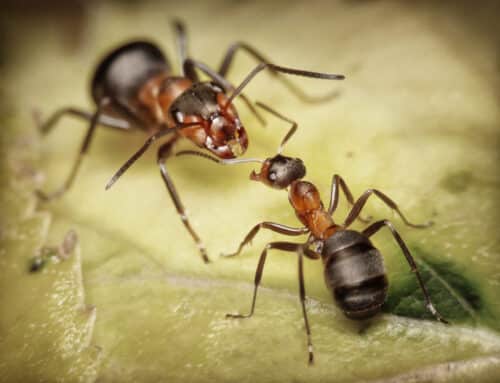
When you think of “fire ants” do you think of hot desert climates? Red colored insects? Burning sting? Well, all of those can be true of fire ants, but (believe it or not) the Seattle region and the Pacific Northwest are home to an invasive fire ant as well.
While not quite as aggressive as its southern neighbor, the European Fire Ants still packs a stinging punch. The “bite” of these little insects can leave you with a raised, itchy welt. And since they live in densely populated colonies, the odds are you will get a swarm of these stings.
So, you might be wondering, how did we end up with these non-native fire ants and what can we do about it?
Emergence of European Fire Ants in North America
European Fire Ants are an invasive species that emerged in the northeastern United States around the turn of the last century. They were first identified in Maine in 1908 and then in Massachusetts and surrounding states.
It is thought that these ants, which are native to northern Europe and Asia, were brought to North America in infested soil, maybe ballast soil from commercial fishing traffic. They are now found throughout the northeastern states and Washington state, as well as south eastern Canada and British Columbia.
Discovery of European Fire Ants in Pacific Northwest
While European Fire Ants have had a foothold in the northeast for decades, they weren’t found in Washington until recently. The first evidence of fire ants in the Pacific Northwest (and Washington state) was near Lake Washington where they were fairly localized.
European Fire Ants are much more prevalent in British Columbia where they have developed pestiferous populations that Washington state would like to avoid.
Unlike their native populations, these ants are spreading and creating new colonies differently in North America. They don’t seem to have a nuptial flight like their European counterparts, but they do create colonies with multiple queens and seem to reproduce rapidly.
European Fire Ant colonies are often very densely populated, but difficult to find because they don’t build a mound or other visual clues. They prefer to nest in warm, moist locations like around trees, bushes, under leaf litter, and woody debris. This is why they are easy to transport in mulch, wood chips, potted plants, etc.
The large number of worker ants are active foragers and they love to feed on sugar-rich food like rotten fruit and honey-dew from aphids. So, they thrive in the coastal climate of Washington.
Threat of European Fire Ants in Seattle Area
The moderate coastal climate of Seattle and the Pacific Northwest makes it ideal for European Fire Ants to grow and thrive. Add in irrigated lawns and gardens and fruit trees and you have a recipe for dense colonies of aggressive, swarming insects that can make areas of infestation unusable.

When European Fire Ants move into new territory, like the Seattle region, they tend to completely displace the native ants of the Seattle / Puget Sound area. They also negatively impact other insects. They disrupt native pollinators because they feed on the nectar and flowers that pollinators need. These fire ants also protect aphids and other honeydew producing insects which results in a surge in aphid populations.
This disruption to the ecosystems isn’t the only problem with this invasive species. It is also a stinging pest that delivers a painful bite to unsuspecting humans. If these fire ant populations start to make their way into lawns, parks, playgrounds, golf courses, and meadows, they will become a greater and greater threat.
UPDATE:
Confirmed European Fire Ants Sightings in Seattle region:
**Please note: European Fire Ants are spreading quickly and have likely established themselves in communities not yet confirmed.
Prevention of European Fire Ants
Managing European Fire Ants can be difficult. Because they form such large colonies with multiple nests, they are hard to eradicate completely. Their nests are inconspicuous so they can be difficult to find which can delay identifying new infestations.
Steps to Preventing European Fire Ants:
Manage their spread
One of the first steps in containing European Fire Ants in the Pacific Northwest is to manage their spread. Inspection of potted plants and other soil that is transported around should be monitored carefully. If you gift a potted plant, check it for fire ants. If you do find ants in your property or in a potted plant, notify the nursery or the county extension office.
Manage their nesting sites
Deter European Fire Ants by creating a less enticing environment. Water your lawn and plants less frequently to reduce moisture. Mow regularly and increase sun exposure if possible. Also remove fallen debris and rotting organic matter that can attract these ants.
Manage their access
Keep these pests out of your home by using barriers around your home (like rock or gravel) and sealing up entry points.
We can all do our part to keep European Fire Ants from developing a foothold in our Pacific Northwest communities. If you have questions or need help with a European Fire Ant infestation, call the professionals at Cascade Pest Control 888-989-8979.



